Abstract
A series of experiments is described in which operant methodology is used to study the effects of drugs on "learning." Emphasis is placed on the technique of repeated acquisition as a behavioral baseline for studying this type of transition state. In this technique, each subject is required to learn a new discrimination each session. Multiple-schedule procedures are also described in which acquisition is compared to a "performance" task, where the discrimination is the same each session. The learning baseline is more sensitive to the disruptive effects of a variety of drugs (e.g., cocaine, d-amphetamine, haloperidol) than is the performance baseline. This general finding obtains across procedural variations and species (pigeons and monkeys). The potential usefulness of these procedures for studying both acute and chronic behavioral toxicity is discussed.
Full text
PDF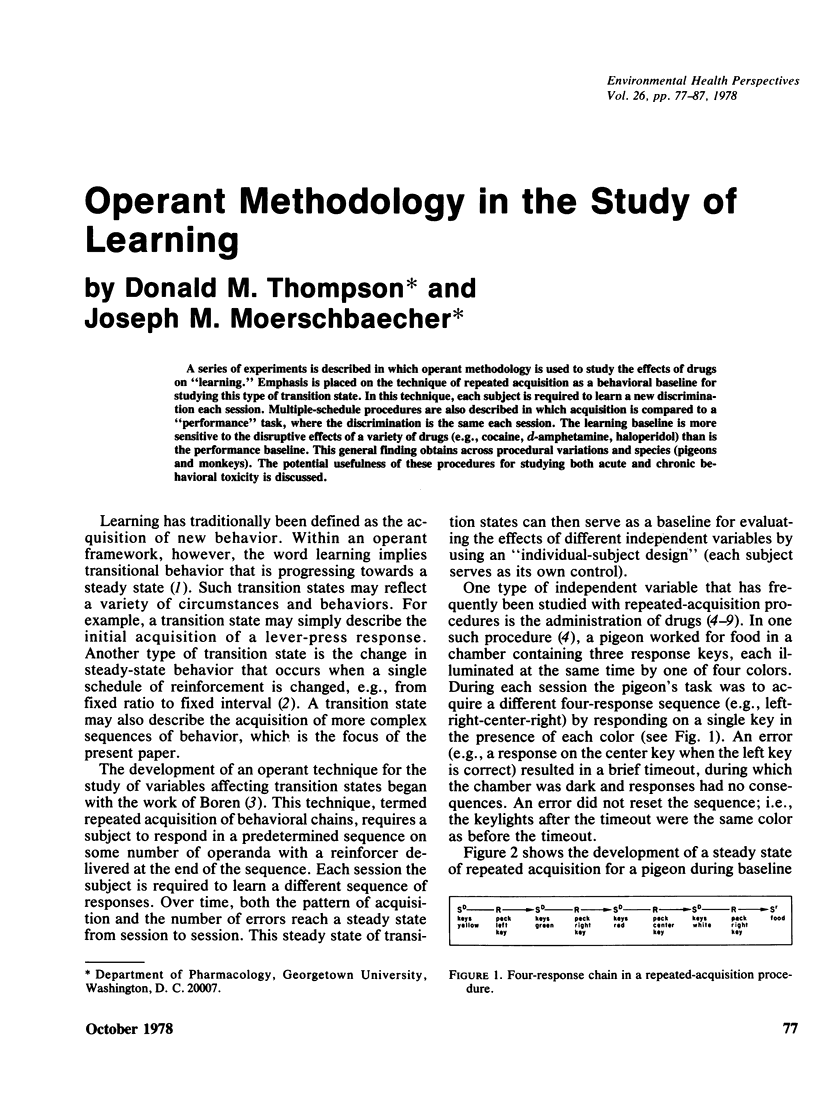
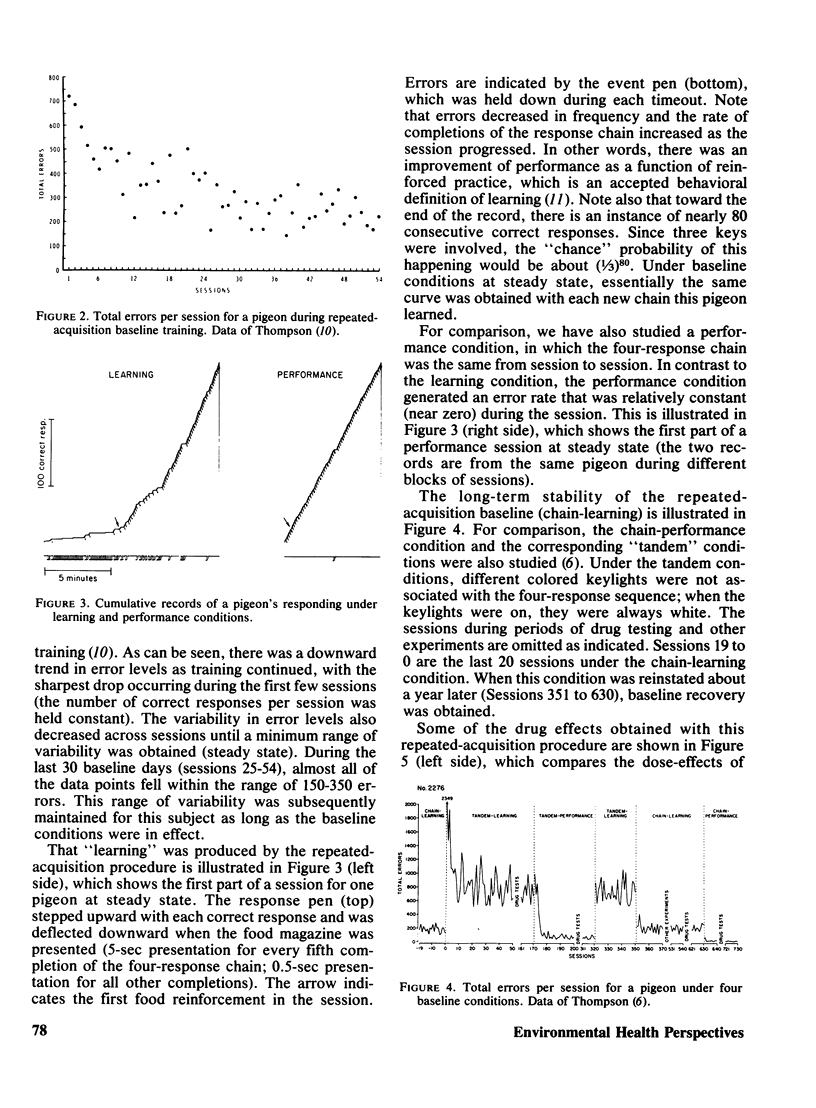
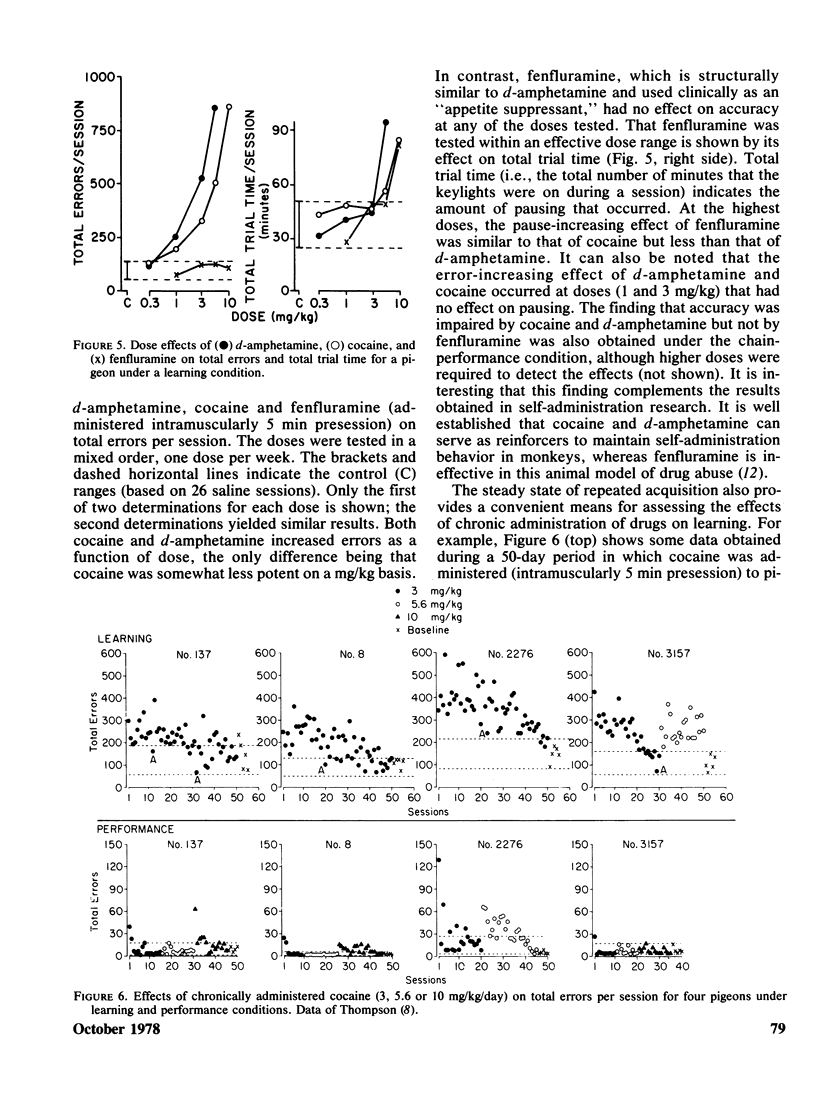





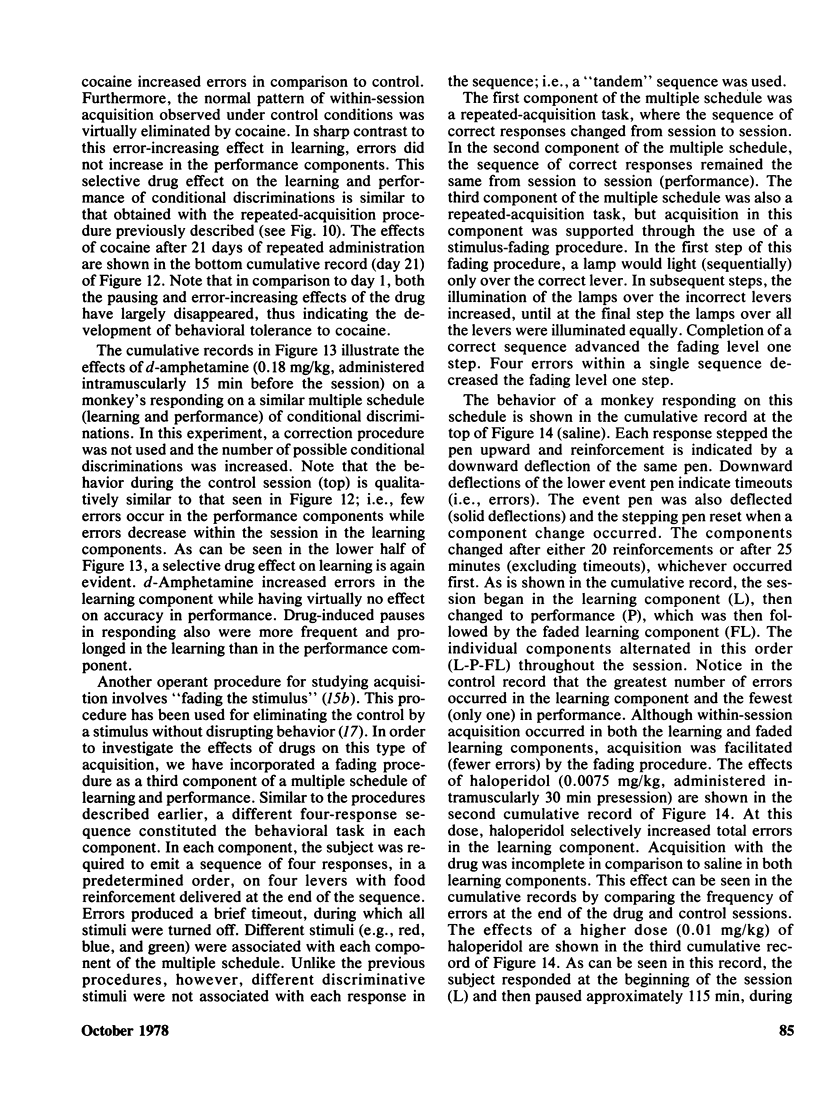
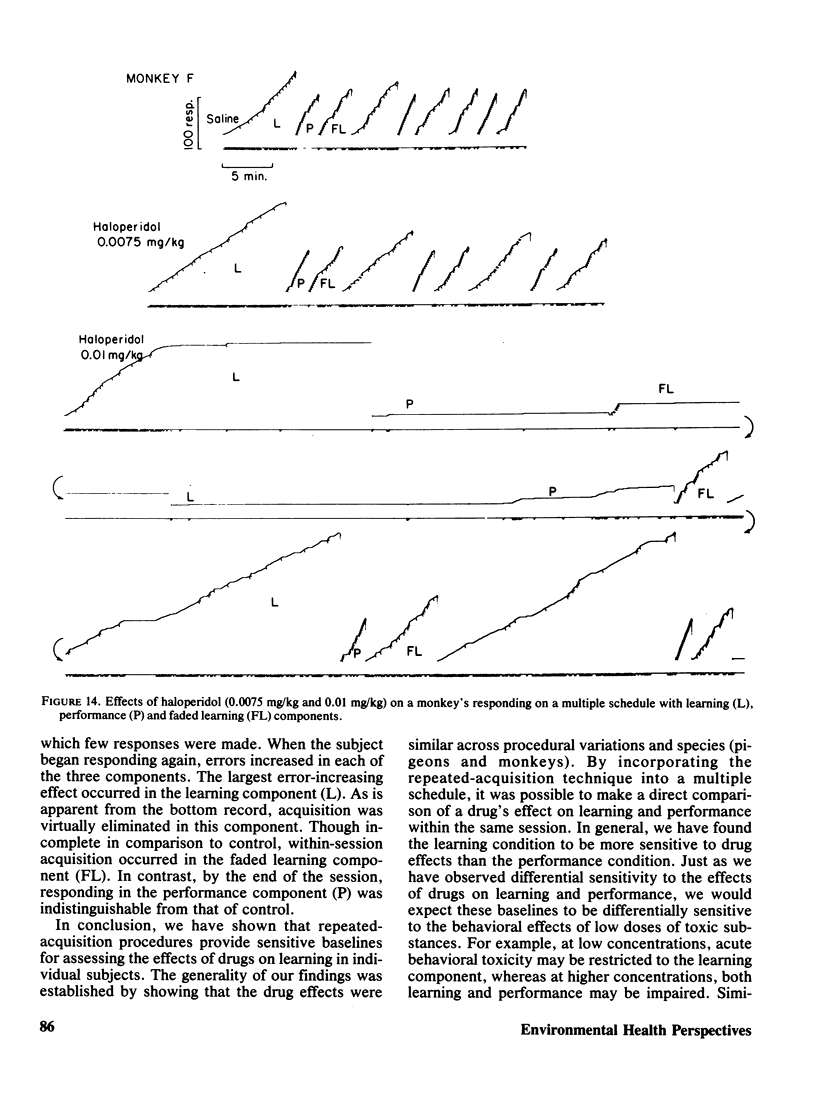
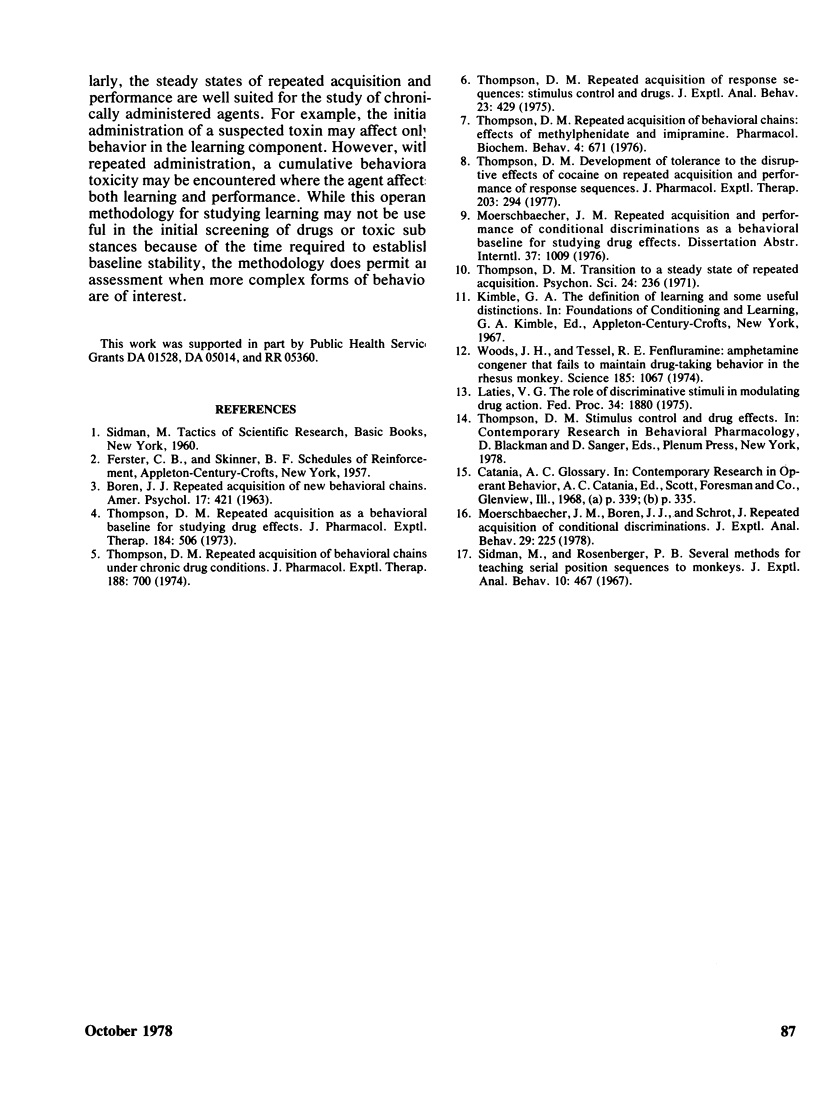
Images in this article
Selected References
These references are in PubMed. This may not be the complete list of references from this article.
- Laties V. G. The role of discriminative stimuli in modulating drug action. Fed Proc. 1975 Aug;34(9):1880–1888. [PubMed] [Google Scholar]
- Moerschbaecher J. M., Boren J. J., Schrot J. Repeated acquisition of conditional discriminations. J Exp Anal Behav. 1978 Mar;29(2):225–232. doi: 10.1901/jeab.1978.29-225. [DOI] [PMC free article] [PubMed] [Google Scholar]
- Sidman M., Rosenberger P. B. Several methods for teaching serial position sequences to monkeys. J Exp Anal Behav. 1967 Sep;10(5):467–478. doi: 10.1901/jeab.1967.10-467. [DOI] [PMC free article] [PubMed] [Google Scholar]
- Thompson D. M. Development of tolerance to the disruptive effects of cocaine on repeated acquisition and performance of response sequences. J Pharmacol Exp Ther. 1977 Nov;203(2):294–302. [PubMed] [Google Scholar]
- Thompson D. M. Repeated acquisition as a behavioral base line for studying drug effects. J Pharmacol Exp Ther. 1973 Feb;184(2):506–514. [PubMed] [Google Scholar]
- Thompson D. M. Repeated acquisition of behavioral chains under chronic drug conditions. J Pharmacol Exp Ther. 1974 Mar;188(3):700–713. [PubMed] [Google Scholar]
- Thompson D. M. Repeated acquisition of behavioral chains: effects of methylphenidate and imipramine. Pharmacol Biochem Behav. 1976 Jun;4(6):671–677. doi: 10.1016/0091-3057(76)90218-5. [DOI] [PubMed] [Google Scholar]
- Thompson D. M. Repeated acquisition of response sequences: stimulus control and drugs. J Exp Anal Behav. 1975 May;23(3):429–436. doi: 10.1901/jeab.1975.23-429. [DOI] [PMC free article] [PubMed] [Google Scholar]
- Woods J. H., Tessel R. E. Fenfluramine: amphetamine congener that fails to maintain drug-taking behavior in the rhesus monkey. Science. 1974 Sep 20;185(4156):1067–1069. doi: 10.1126/science.185.4156.1067. [DOI] [PubMed] [Google Scholar]




